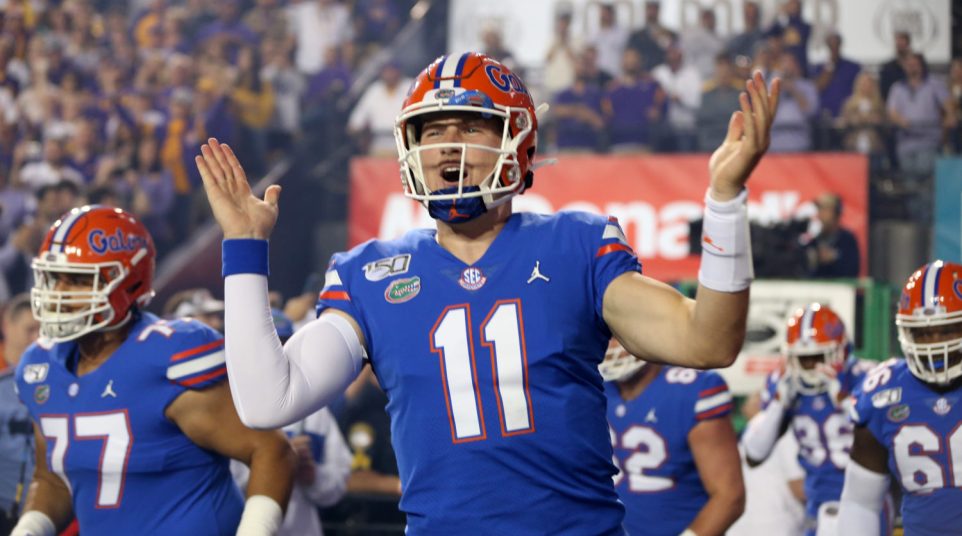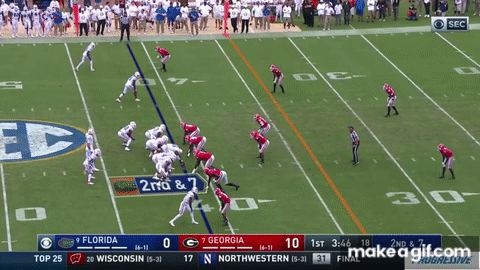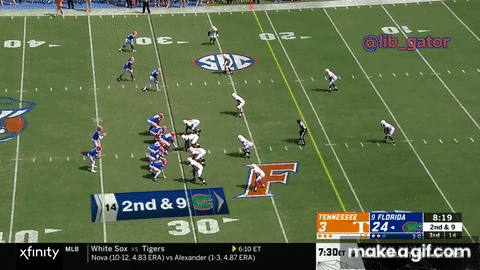
Florida football: Why Kyle Trask has been so impressive for the Gators
Kyle Trask has filled in admirably as Florida’s starting quarterback since Feleipe Franks suffered a season-ending injury against Kentucky last month.
Trask rallied the Gators from a double-digit deficit at Kroger Field and then, in his first few games as a starting quarterback since leading the freshman football team in his hometown of Manvel, Texas, Trask orchestrated comfortable home victories over rival Tennessee and then No. 7 Auburn in The Swamp.
In the Auburn game, Trask showed his talent, competitiveness and toughness, weathering a brutal (but clean) shot from Auburn’s Marlon Davidson to come back and play the remainder of the game on a sprained MCL in his knee.
Last Saturday night, on the same sprained knee, he stood toe-to-toe with LSU Heisman candidate Joe Burrow in Death Valley for most of 4 quarters before a late interception and some timely LSU red zone defense proved to be the difference in an epic 42-28 LSU victory.
On the season, Trask has thrown for 1,191 yards, completed 68.4% of his passes and tossed 10 touchdowns against only 3 interceptions, all while averaging 8.8 yards per attempt, well above the national average of 7.2. Statistically, Trask’s numbers aren’t as compelling as Franks’ were (Franks: 698 yards, 76.1% completion percentage, 5 touchdowns and 9.8 yards per attempt), but Trask has faced 2 of America’s best defenses as opposed to the one Franks faced (Miami).
In other words, the Gators have hardly missed a beat at the quarterback position, and judging by Trask’s composed performance in Baton Rouge last Saturday night, Florida has found a leader in their new signal caller as well.
So what exactly has made Trask successful? We take a look at two things that have made Trask special, and one thing he will need to continue to improve moving forward in the 2019 season and beyond.
Understanding the offense and reading progressions
Trask has a good, but not great arm. He’s not going to wow you with the types of rocket-armed lasers that made Franks a big-time recruit and continue to make him attractive to the NFL.
That said, while improved, Franks has long struggled with secondary reads and identifying receivers deep into his progressions. What’s more, whether because of his plus-athleticism, a lack of trust in an inexperienced offensive line, or the failure to cycle through all his options, Franks too often abandoned clean pockets early in the season and ran or trusted his arm to make low-percentage throws into tight windows.
Last season, you see Franks force a throw into the teeth of Cover 2, where a simple throw to an open man underneath or another receiver open on a little dig route likely moves the sticks.

Some of those issues for Franks are about recognizing a Cover 2 pre-snap. But some are about post-snap choices to not lock in on a receiver and read a progression.
Here’s a great example from the LSU game of Trask reading a pre-snap look and making a quick decision once a linebacker commits to pursuit of the play fake.
While the LSU performance was Trask’s best to date, it’s just a modest improvement over what the junior quarterback has shown trough his first 4 starts.
In those 4 games, Trask has by and large done a terrific job of diagnosing the coverages he’s likely to see pre-snap and reading his entire progression. The reward? Plays like the opening touchdown against Auburn, which Dan Mullen recognized as “a great read to find his third option.”
See ya later, Freddie Swain ✌️ pic.twitter.com/ahAAyPlE3x
— Sports Daily (@SportsDGI) October 5, 2019
Trask’s ability to make the correct read and take what the defense offers helped him break Florida’s all-time consecutive completions record over the course of the Tennessee and Towson games — heady stuff given who has played quarterback at Florida in the past.
Trask can continue to improve from a decision-making standpoint (more below), but at present, his ability to find secondary and even third options consistently has opened up the Florida passing game and helped optimize the talents of a Florida wide receiving corps that features an SEC-leading 7 players with 10 receptions or more.
Attacking the middle of the field and intermediate passing game
Another area Trask has excelled is his ability to make accurate throws in the intermediate passing game.
Last season, Franks was the 2nd-worst quarterback in the Power 5 in terms of accuracy on downfield throws. He was much better in the intermediate passing game (10-to-20- yard throws), averaging a 64% completion rate on such attempts, averaging 11.7 yards per throw. Trask has attempted these passes at a much higher clip than Franks through his 4 starts (57 throws to 28) and been successful doing so, with a 69% completion rate on such attempts and an average of 12.3 yards per attempt.
Trask’s ability to consistently hit intermediate passes like this one:
I'm not a big arm strength guy at all, but Kyle Trask quietly has an absolute rocket pic.twitter.com/keXH0nxQU5
— Max Toscano (@maxtoscano1) October 13, 2019
Has helped open up Florida’s playbook to take shots like this one:
Kyle Pitts over Grant Delpit for 28 yards pic.twitter.com/eAIbUVnWVT
— #BusinessIsSuspended (@FTBeard11) October 13, 2019
Trask has also been marvelous at attacking the middle of the field. Per Stats Solutions, Trask is 53-for-76 for 772 yards and 8 touchdowns against only 2 interceptions on throws over the middle of 5-20 yards. That’s an average of 9.5 yards per attempt and includes nearly half of his passing yards against a stout LSU secondary.
When you are as deep as Florida, the ability to consistently attack the middle of the field allows Mullen and his staff to mix personnel and employ the deepest position groups on the football team (TE/WR) to diagnose and attack mismatches. This strategic advantage has helped offset Florida’s lack of consistency in the run game.
Needs to improve: Ball security and timing
Trask is still a work in progress, especially when it comes to his decision-making to hold the ball too long in the pocket, what you’ll hear referred to occasionally as an “internal clock.” Here’s an example, as Trask locks onto the safety too long, then insists on reading a progression completely rather than throwing the ball away, ending in a sack.

Against Auburn, this got Trask into big trouble, as he was strip-sacked multiple times by Auburn, nearly resulting in game-changing turnovers. All told, Trask has fumbled 5 times in his first 4 games, to go along with 3 interceptions.
Trask’s last interception, which came with Florida driving to tie the game in the 4th quarter against LSU, was caused by a combination of mistakes. He held the ball too long, didn’t recognize the safety high, and threw into the teeth of coverage off his back foot. Yes, Tyrie Cleveland is clearly held on the play, and the officials missed the call. But Trask should have recognized that and thrown at Cleveland (and away from the coverage), thus forcing the referees to call the penalty. Instead, he did this:
Tyrie Cleveland might have been held on this play.
*might* is the sarcasm here. https://t.co/yAhduVbwLq
— Barrett Sallee (@BarrettSallee) October 13, 2019
That mistake aside, Trask did become the first visiting quarterback to throw for 300 yards in Tiger Stadium since Rex Grossman in 2000. He also showed — yet again — that he has the poise, confidence and toughness to help the Gators challenge for an SEC East division title and a trip to Atlanta. These are all immense positives, and a terrific start for a player who might only be scratching the surface of his talents and capabilities.
